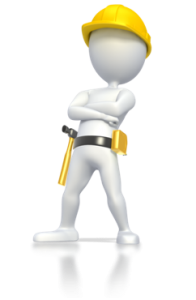PRE-WORK RISK ASSESSMENT
Remember: Stop, Look, Assess & Manage!!!
Before commencing any work employees must always adhere to the Stop, Look, Assess and Manage (SLAM) process so as to prevent injuries, ill health and other types of losses.
- Firstly stop and look around by using your senses.
- Always know what is going around you and be alert for potential hazards.
PRE-WORK RISK ASSESSMENT
Ask Yourself the Following 9 Questions Before Starting any Job:
- Am I trained to do the job?
- Do I know the procedure/standard for the job?
- Do I have the correct PPE for the job?
- Do I have the right tools for the job?
- Are the tools safe and in good working condition?
- Has anything changed since I last did this job?
- Is there anything around me that can injure me?
- Is there anything or anyone working around me?
- Is a serious accident possible if I continue with the job?
When to perform Pre-Job Risk Assessment:
- The Pre-Job Risk Assessment must be performed prior to performing any tasks that is not preceded by any form of continuous risk assessment.
- These continuous risk assessments include the following:
– Safe Declaration by the “Team Leader” (TL).
– Any Pre-Use Inspection Checklists conducted i.e. Pre-Use Inspection Checklist, Battery Loco, Front End Loader (LHD) Car Operator’s Pre-Use Inspection Checklist etc.
- The Pre-Job Risk Assessment must further be performed:
– If the task about to be performed has been changed, modified, altered or amended.
– Prior to performing a non-routine task (task that is non-repetitive, not regular or performed every day).
– After an incident has occurred.
Who to perform Pre-Job Risk Assessment?
- The Responsible Line Supervisor is responsible to conduct a Pre-Job Risk Assessment where required. Line Supervisors include:
– Team Leader, Artisan etc.
– Miner, Artisan etc.
– Shift Boss, Foreman, Safety Officer etc.
– Mine Manager, Engineer, Safety Officer.

